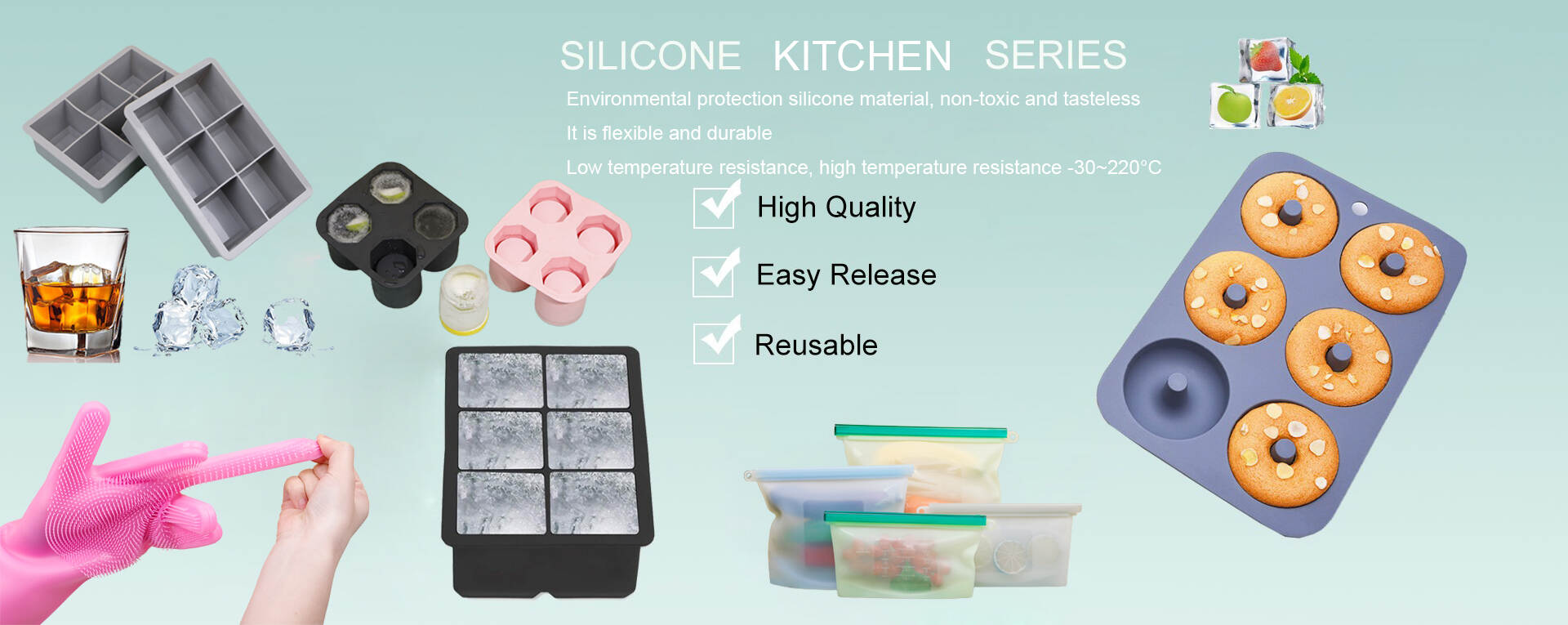Email format error
Email cannot be empty
Email already exists
6-20 characters(letters plus numbers only)
The password is inconsistent
Please enter the email address you’d like your password reset information sent to.
Email format error
Email cannot be empty
Email does not exist
Reset account password
For the account
6-20 characters(letters plus numbers only)
The password is inconsistent
Reset success
Your password was reset. You can log in using your new password.
Login


Are Silicone Kitchen Utensils Safe for Cooking?
2025-03-27 14:56:27
When it comes to cooking, the safety and quality of kitchen utensils are of the utmost importance. Silicone kitchen utensils have gained significant popularity in recent years due to their unique properties and versatility. But are they truly safe for cooking? Let's dive into the details to uncover the truth.
The Composition and Safety of Silicone Utensils
Silicone utensils are made from a synthetic polymer composed of silicon, oxygen, carbon, and hydrogen. This material is known for its flexibility, durability, and heat resistance. One of the key factors that make silicone utensils safe for cooking is that high-quality food-grade silicone is non-toxic and free from harmful chemicals like BPA and phthalates. These chemicals, often found in plastic utensils, can leach into food when exposed to heat, posing potential health risks. However, food-grade silicone has been certified by the FDA as safe for use in cooking and food preparation.
Heat Resistance and Versatility
Silicone utensils can withstand high temperatures, typically up to 450°F (232°C) or even higher. This makes them suitable for a wide range of cooking tasks, from baking to stir-frying. Unlike plastic utensils that may melt or deform at high temperatures, silicone utensils remain stable and do not release harmful substances. Their non-stick properties also make them ideal for use with non-stick cookware, as they won't scratch the delicate surfaces. Additionally, silicone utensils are flexible, allowing for easy scraping and mixing, which reduces food waste.
Environmental and Durability Considerations
Silicone utensils are not only safe for cooking but also environmentally friendly and sustainable. While they are not biodegradable, their durability means they do not need to be replaced frequently. This reduces waste and makes them a more sustainable choice compared to disposable plastic utensils. Moreover, silicone can be recycled into petroleum products, further contributing to its eco-friendly nature.
Choosing the Right Silicone Utensils
When selecting silicone kitchen utensils, it is crucial to ensure that they are made from high-quality food-grade silicone. Look for products that are labeled as BPA-free and FDA-certified. Reputable brands often provide detailed information about the materials used in their products, which can help you make an informed decision. Additionally, consider the specific needs of your cooking style. For example, if you frequently use non-stick cookware, silicone utensils are an excellent choice due to their gentle nature.
Potential Concerns and Precautions
While silicone utensils are generally considered safe, there are a few potential concerns to be aware of. Some low-quality silicone products may contain fillers or additives that could potentially leach into food. To avoid this, always choose high-quality, food-grade silicone from trusted manufacturers. Additionally, although silicone is heat-resistant, it is still important to follow the manufacturer's guidelines for temperature limits to ensure optimal performance and safety.
So, silicone kitchen utensils are a safe and versatile choice for cooking. Their non-toxic nature, heat resistance, and non-stick properties make them ideal for a variety of cooking tasks. By choosing high-quality food-grade silicone products, you can enjoy the benefits of these utensils without worrying about potential health risks.
We are a leading manufacturer and supplier specializing in high-quality, food-grade silicone kitchen utensils. Our products are durable and meet international safety standards. We offer OEM and ODM services and are available for wholesale and export from China. Contact us for more information.
If you already own silicone kitchenware, I can provide you with some commonly sought-after tips on how to clean silicone kitchen utensils properly. Here are the solutions.
To clean silicone kitchen utensils properly, follow these steps:
- Rinse the utensils under warm water immediately after use to remove any food residue.
- Use mild dish soap and a soft sponge or cloth to gently scrub the silicone surfaces.
- For tough stains or odors, create a paste with baking soda and water, then rub it onto the utensils before rinsing clean.
- Avoid using abrasive cleaners or scouring pads that might damage the silicone.
- If your utensils are dishwasher-safe, place them on the top rack for cleaning.
- Dry thoroughly with a clean towel or let them air-dry.
- Store in a dry area to prevent mold or mildew from forming.
Contact us

